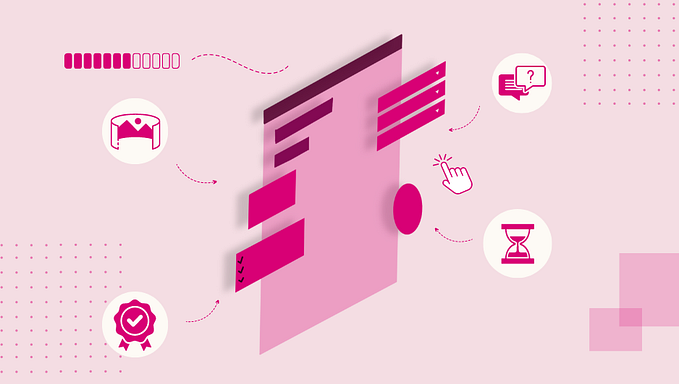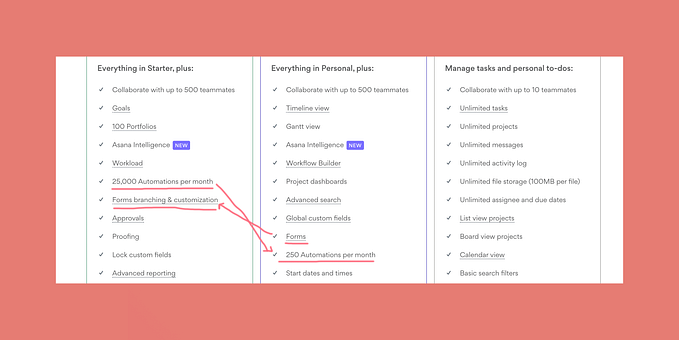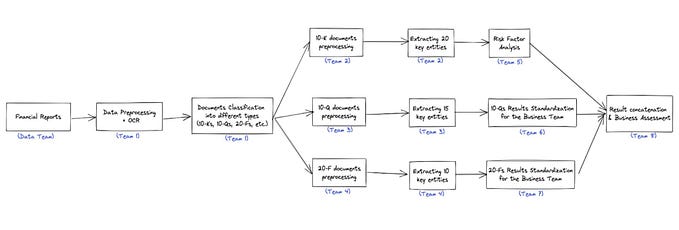3 marketing challenges a no-code website builder can solve for your business
In 2017, Petal, an online credit card startup, had just secured seed funding to bring its product to market and needed to get a website up ASAP.
But its engineering team was fully occupied building the core product, leaving the marketing team with limited developer resources to build a website.
Marketing teams need more control over web design
Like Petal, many marketing teams encounter obstacles when they depend on technical staff for web design. Additionally, legacy content management systems (CMSs) limit their creative freedom instead of fostering it.
These obstacles result in a sluggish and ineffective website development process that negatively impacts marketing efforts.
Fortunately, no-code website builders like Webflow provide a solution to these problems.
By using Webflow, Petal’s designers were able to take full charge and quickly create, improve, and manage their website without needing help from engineers.
By letting marketing teams build, manage, and customize sites without coding, no-code website builders help resolve three key challenges:
- Adapting quickly to new trends and campaigns
- Launching campaigns strategically with precise timing
- Gaining control over your brand story
Let’s look at each challenge and see how no-code website builders can help marketing teams overcome them.
Challenge #1: Adapting websites rapidly to new market trends and campaigns
It’s crucial for businesses to be agile if they want to stay competitive.
For example, when COVID-19 hit, the only businesses that survived were the ones that moved their operations online and fully embraced digital offerings.
At the same time, consumer habits and preferences were changing rapidly. Social media became the new way people window-shopped, and about 60–70% of consumers started shopping through multiple channels.
Any company that didn’t adapt to these changes risked falling behind.
Similarly, brands need to keep their websites and content up-to-date with changing market trends to attract consumers.
However, making these changes quickly can be difficult without the right tools. Some companies rely on developers and inflexible content management systems (CMS), which makes implementing changes slow and costly.
Using a no-code website builder like Webflow solves this problem. Such platforms allow for greater agility and make it much easier to follow Growth-Driven Design (GDD), a web design approach that focuses on trying out new ideas and constantly improving your website.
Instead of doing massive website updates infrequently, Growth-Driven Design (GDD) means you keep testing and improving page designs, layouts, and content regularly based on data and feedback. This flexibility helps teams react quickly to changes happening both inside and outside the company.
Imagine doing this the traditional way.
As an example, let’s consider a common web development task: creating a simple contact form with validation. I’ll show one way to do this using code versus a no-code website builder.
Working with code, here’s what you’d have to do:
1. You’d start by creating the HTML structure for your contact form. This would include form elements like input fields for name, email, and message, as well as a submit button. You’d also need to add labels and placeholders for each input field.
<form action="submit.php" method="POST">
<label for="name">Name:</label>
<input type="text" id="name" name="name" required>
<label for="email">Email:</label>
<input type="email" id="email" name="email" required>
<label for="message">Message:</label>
<textarea id="message" name="message" rows="4" required></textarea>
<input type="submit" value="Submit">
</form>2. You’d then create CSS styles to make the form visually appealing, possibly adjusting colors, fonts, and layout to match your website’s design. Here’s an example of what this might look like:
form {
margin: 20px;
padding: 20px;
border: 1px solid #ccc;
}
label {
display: block;
margin-bottom: 10px;
}
input[type="text"],
input[type="email"],
textarea {
width: 100%;
padding: 10px;
margin-bottom: 10px;
}
input[type="submit"] {
background-color: #007BFF;
color: white;
padding: 10px 20px;
border: none;
}3. For validation, you’d likely need JavaScript to check if the input fields are filled out correctly (e.g., valid email format) and prevent the form from being submitted if there are errors.
document.querySelector("form").addEventListener("submit", function (event) {
const email = document.querySelector("#email").value;
const emailPattern = /^[a-zA-Z0–9._-]+@[a-zA-Z0–9.-]+\.[a-zA-Z]{2,4}$/;
if (!emailPattern.test(email)) {
alert("Please enter a valid email address.");
event.preventDefault();
}
});If your eyes glazed over just looking at all that code, you’re not alone.
Now here’s one way to achieve the same thing in Webflow without writing a single line of code:
1. Simply copy-paste any of these free clonables from the Webflow Marketplace into your site in Webflow:
- Instant Form Validation clonable by Neue World
- Easy Form Validation clonable by Timothy Ricks
2. Edit the design to match the rest of your site with Webflow’s drag-and-drop interface.
That’s it!
No dealing with messy code.
No having to find a developer to help you.
For Dropbox Sign (formerly HelloSign), moving their website from traditional web development to Webflow played a key role in helping them adapt quickly.
As Justin Johnson, Web Developer at Dropbox Sign, shares:
“With Webflow, innovation at speed is a huge benefit. We can now push changes or bring out a new feature in a week instead of a month.”
Using Webflow’s visual tools and collaboration features, the marketing and design teams at Dropbox Sign gained full control over their website.
This gave them the ability to regularly improve the content, update old pages, and adjust the user experience and call-to-action buttons in real time in response to search trends and conversion data.
The flexibility that no-code platforms like Webflow provide is crucial for modern organizations that want to keep up with the fast pace of change.
Try out Webflow’s website builder today to see how you too can design websites quickly and flexibly without needing to know how to code.
Challenge #2: Launching campaigns strategically with precise timing
Grubhub encountered a common challenge that many marketers deal with today: the need to launch campaigns strategically and precisely timed for maximum impact.
They had only 7 weeks to carry out their year-end initiative, so they had to move fast. However, rushing can often result in wasted effort and missed opportunities.
This is a significant problem for many companies. Missing important dates like holidays or industry events can greatly reduce the potential audience because people are more likely to be interested in relevant topics during those times.
However, scrambling at the last minute can also harm the quality of a campaign. It may lead to hurried decisions and a lack of attention to detail.
But while proper timing is crucial, it’s challenging when you’re dependent on your developers’ availability. Moreover, traditional coding slows down the execution of creative ideas, which hurts agility and forces teams to sacrifice quality for speed.
To address this challenge, Grubhub partnered with Webflow Expert, Wondersauce.
Webflow enabled them to launch precisely when needed. Its drag-and-drop visual builder meant speedy creation without restricting design. Plus, with the exceptional scalability of Webflow’s Enterprise plan, the platform easily managed 11,000 users per minute during peak traffic.
The campaign was a resounding success.
Charlie Streit, Grubhub’s Senior Associate Producer shared:
“The 2022 Delivered initiative exceeded our expectations. We were thrilled with the level of engagement from our users and at the overall execution of the experience from Wondersauce.”
A no-code website builder like Webflow gives marketing teams the flexibility they require. It enables fast website creation without sacrificing quality. With Webflow, you can design visually, go live faster, and consistently launch campaigns on schedule.
Try Webflow today to start moving at the speed of inspiration.
Challenge #3: Gaining control of your brand story
Telling your brand’s story in a compelling way has never been more important. With so much competition in today’s marketplace, you need a consistent story that connects with your audience.
However, many companies struggle to take full ownership of their brand story when they use traditional web design tools.
Depending on web agencies or developers means sacrificing creative control and flexibility. Making updates can be a lengthy process, making it difficult to promptly adjust messaging or campaigns.
Plus, without direct access, inconsistencies can creep in, undermining core brand elements across various channels.
There are real consequences to not controlling your brand storytelling.
68% of businesses say brand consistency has contributed 10–20% of their revenue growth. That means if you don’t control your brand storytelling and maintain consistency, you might miss out on opportunities to grow your revenue.
For organizations that prioritize their local community, having a genuine brand story is essential for building connections with local residents.
Consider the case of Ponce Bank, a community bank based in New York.
They faced a challenge with their old website platform, which made it extremely difficult to adjust their brand tone or address evolving requirements. Even small changes required a month of communication and coordination with developers.
As Steve Hamilton, their SVP, put it:
“We couldn’t control our story — which made it harder to show how community banking can drive social equity.”
After making the switch to Webflow, a no-code web design platform, Ponce Bank’s marketing team gained complete creative control, allowing them to visually create and edit websites.
They can now “own their brand narrative,” and they can create new web pages in a matter of days, instead of weeks.
This change alone led to a 78% increase in conversion rates, and their brand became more distinct, strengthening their impact on the community.
For global brands like dormakaba, which need a consistent message across multiple countries, no-code website builders are incredibly valuable.
With a history of over 150 years of mergers and acquisitions, dormakaba had a disjointed brand presence across 39 countries. Their old content management system (CMS) was rigid and making changes often required costly developers.
By adopting Webflow, dormakaba was able to simplify its processes and build websites four times faster while maintaining consistent branding across the world.
Webflow allowed it to centralize its global, digital brand and ensure the look and feel of its marketing sites stay consistent.
No-code website builders give marketers the power to craft their brand story without depending on developers.
Take control of your brand narrative — build your first landing page in Webflow today. It’s free to try until you’re ready to launch.
How Webflow helped Hubilo’s marketing team increase speed-to-market by 85%
Hubilo’s experience shows how migrating to a no-code platform like Webflow can empower you to overcome all three challenges discussed so far.
As a rapidly growing startup trying to establish itself as a leader in the virtual events space, Hubilo needed to redesign its website to better resonate with its audience. But relying on developers was slowing down iteration.
Michael Rossi, Sr. UX/UI Designer, realized:
“The bloated and buggy nature of WordPress — using plugin after plugin — on top of the vulnerabilities that come with using open source; we came to the realization that it’s not a good way for building a website anymore… We knew there were alternatives to WordPress out there, and we really needed a solution that could allow us to design, test, and publish things on the website faster.”
After the switch to Webflow, the marketing team immediately gained more autonomy over branding and content. They can now update messaging and pages on the fly without waiting on developers.
This newfound agility also enabled the precise timing of initiatives, and owning their web presence led to major improvements.
They were able to:
- Cut website ticket completion time by 50%
- Drive a 19% increase in organic homepage traffic within the first quarter of migrating to Webflow
- Grow total organic search traffic by 89% year-over-year
Here’s how Taryn summarizes the results of this migration:
“Creating foundations in Webflow has helped us constantly deliver on our goal of speed to market. We can experiment more and experiment faster.”
Empower your marketing team with no-code web design
So there you have it.
Instead of relying on slow, outdated tools and processes for building marketing websites, adopting no-code website builders like Webflow can help you overcome these challenges.
With its visual drag-and-drop interface and collaborative workflow, Webflow gives marketing teams the creative freedom and ownership they need to overcome these hurdles.
No more creative handcuffs restricting your big ideas.
No more developer bottlenecks stealing your speed and agility.
And no more compromising on design quality and brand integrity.
Experience the benefits of no-code web design for your marketing team. Try Webflow today.








